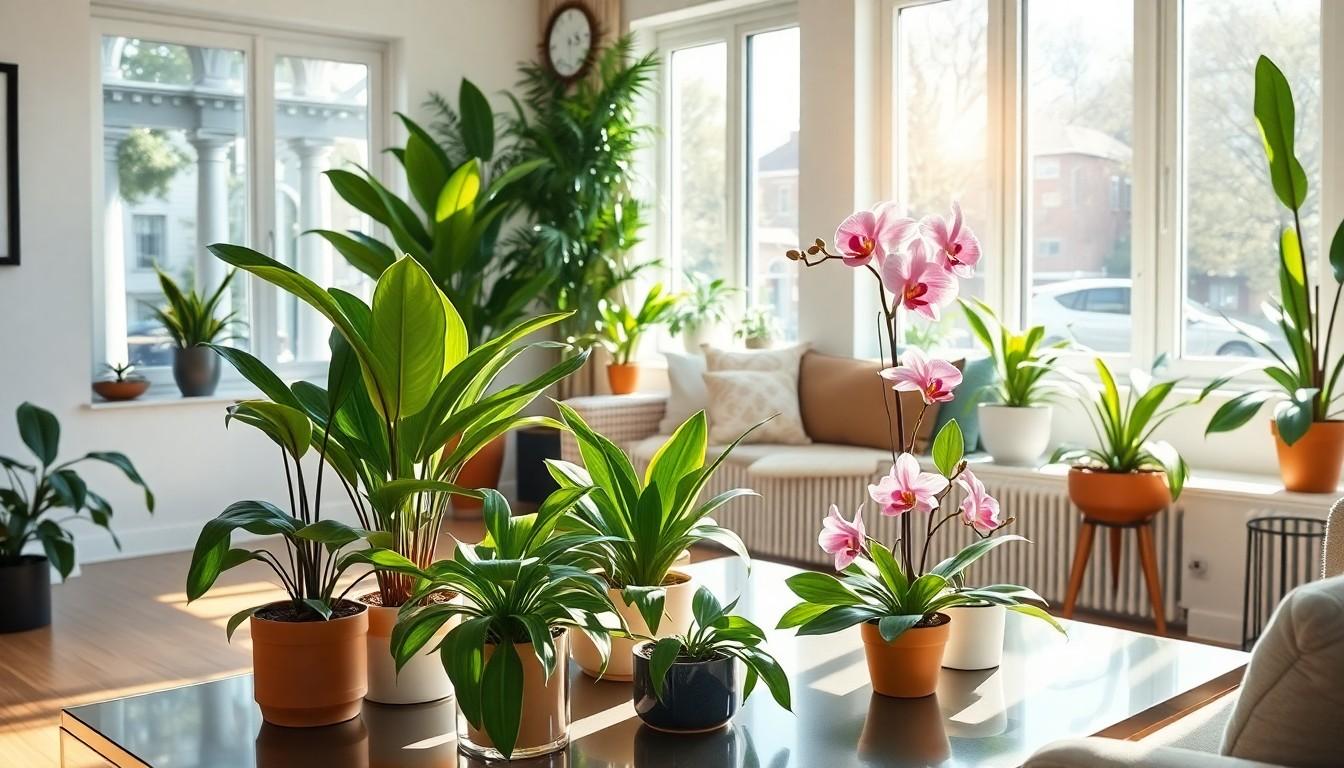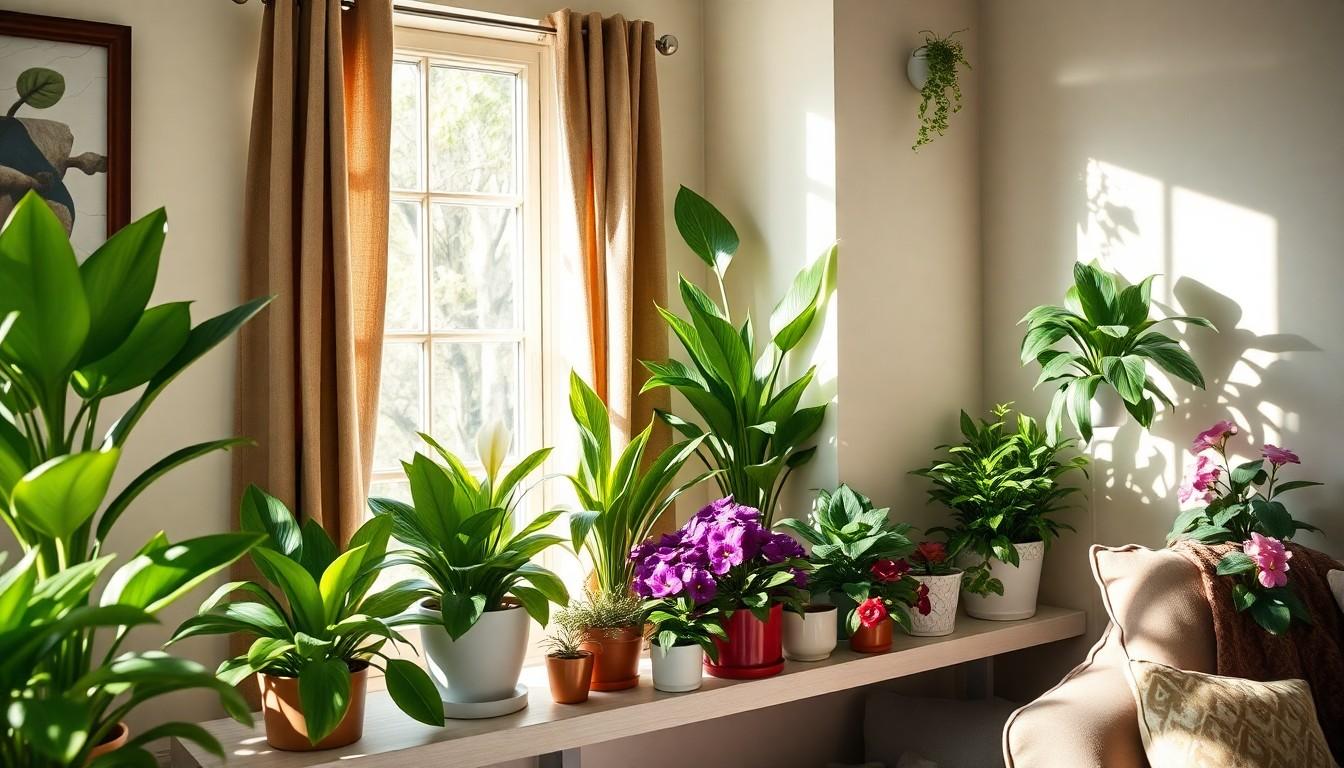Phone:
(701)814-6992
Physical address:
6296 Donnelly Plaza
Ratkeville, Bahamas.

Transforming a house into a home often involves more than just stylish decor; it’s about adding a touch of life. Enter houseplants—nature’s little green superheroes that not only beautify spaces but also improve air quality and boost mood. Who knew that a bit of foliage could be the secret weapon against the Monday blues?
Indoor plants improve indoor air quality by filtering toxins and releasing oxygen. Health benefits include reduced stress levels due to the calming presence of greenery. Research indicates that interacting with plants can lower blood pressure, resulting in enhanced relaxation at home.
Adding greenery to a space boosts mood significantly. Studies show that having plants around can lead to increased happiness and reduced feelings of fatigue. Levels of productivity also rise when individuals work in environments with plants, fostering creativity and focus.
Plants contribute to humidity levels by releasing moisture into the air. This represents a natural solution to dry air conditions, promoting better respiratory health. Families with indoor plants often experience fewer allergies, as certain plants can trap dust and airborne particles.
Moreover, houseplants serve as a decorative element, enhancing aesthetic appeal in living spaces. Different species provide versatility in design, allowing individuals to create unique atmospheres. For example, vibrant flowers brighten rooms, while lush foliage creates a serene environment.
Another benefit includes fostering a connection with nature, especially in urban areas where green spaces may be limited. This connection can boost overall well-being by promoting mindfulness. Individuals often find joy and satisfaction in caring for plants, leading to a rewarding hobby.
Lastly, certain indoor plants yield fresh herbs, enhancing culinary experiences. Growing herbs indoors presents an opportunity for individuals to access fresh ingredients year-round, promoting healthy cooking habits. Embracing indoor plants creates a thriving ecosystem, ultimately transforming a house into a home.

Selecting the right plants enhances the ambiance of any home. Various types cater to different preferences and environments.
Snake plants thrive in low-light conditions. ZZ plants tolerate neglect and require minimal sunlight. Pothos adapts well to dim spaces, offering cascading vines. These plants enhance decor while purifying the air. They require little maintenance, making them ideal for busy individuals.
Spider plants excel at removing toxins from the air. Peace lilies filter indoor pollutants and add beauty to any room. Boston ferns improve humidity levels and promote respiratory health. Aloe vera not only purifies air but also possesses healing properties. Incorporating these plants creates a healthier living space.
African violets provide vibrant colors with minimal care. Orchids produce stunning blooms and thrive indoors with proper light. Bromeliads offer exotic flair and long-lasting flowers. Geraniums can brighten up windowsills, adding cheerfulness. Flowering plants enhance the visual appeal and contribute to overall well-being.
Selecting the right plant for a home requires consideration of several key factors. Understanding light and water requirements is crucial for plant health.
Different plants thrive in varying light conditions. Low-light plants like snake plants and ZZ plants adapt well to dim spaces. Some require indirect sunlight, while others prefer bright, filtered light. Water needs fluctuate as well; for instance, pothos tolerate infrequent watering, but peace lilies prefer consistently moist soil. Match the specific light and moisture needs of chosen plants to the conditions in a home.
Size plays a vital role in the selection process. Small plants like succulents fit comfortably on windowsills and desk spaces. Conversely, larger plants, such as fiddle-leaf figs, demand more room and can serve as statement pieces in living areas. Growth expectations should also be noted; some plants grow rapidly, while others develop slowly. Opt for plants that align with the available space and desired aesthetic.
Caring for indoor plants involves specific practices that ensure their health and longevity. Understanding these tips can enhance plant vitality and the overall aesthetic of the home.
Watering frequency varies among plants. Snake plants thrive on infrequent watering, while peace lilies prefer consistently moist soil. During the growing season, many plants benefit from a balanced fertilizer every four to six weeks. Always check the soil moisture before watering to prevent over-saturation. An established watering schedule aids in maintaining proper hydration levels. Use room-temperature water to avoid shocking the roots. When fertilizing, apply only the recommended amount to prevent fertilizer burn. Tailoring care to specific plant needs, based on species, ensures optimal growth.
Indoor plants face various pests, including aphids, spider mites, and mealybugs. Regularly inspecting plants helps identify infestations early. Neem oil serves as an effective organic solution for controlling pests. It disrupts pest life cycles and minimizes damage to plants. Introducing beneficial insects like ladybugs can also combat aphid populations. Maintaining proper humidity reduces spider mite infestations. Keeping leaves clean by wiping them with a damp cloth prevents dust accumulation, promoting photosynthesis. Addressing pest issues swiftly keeps plants healthy and thriving.
Incorporating houseplants into living spaces offers a multitude of benefits beyond aesthetics. They not only purify the air but also create a soothing atmosphere that enhances overall well-being. Choosing the right plants based on light, water, and size requirements ensures a thriving indoor garden tailored to individual lifestyles.
Regular care and attention can turn plant ownership into a rewarding hobby while fostering a deeper connection with nature. Whether it’s a low-maintenance snake plant or vibrant orchids, each plant contributes to a healthier and more inviting home. Embracing indoor greenery ultimately transforms a house into a sanctuary of peace and productivity.